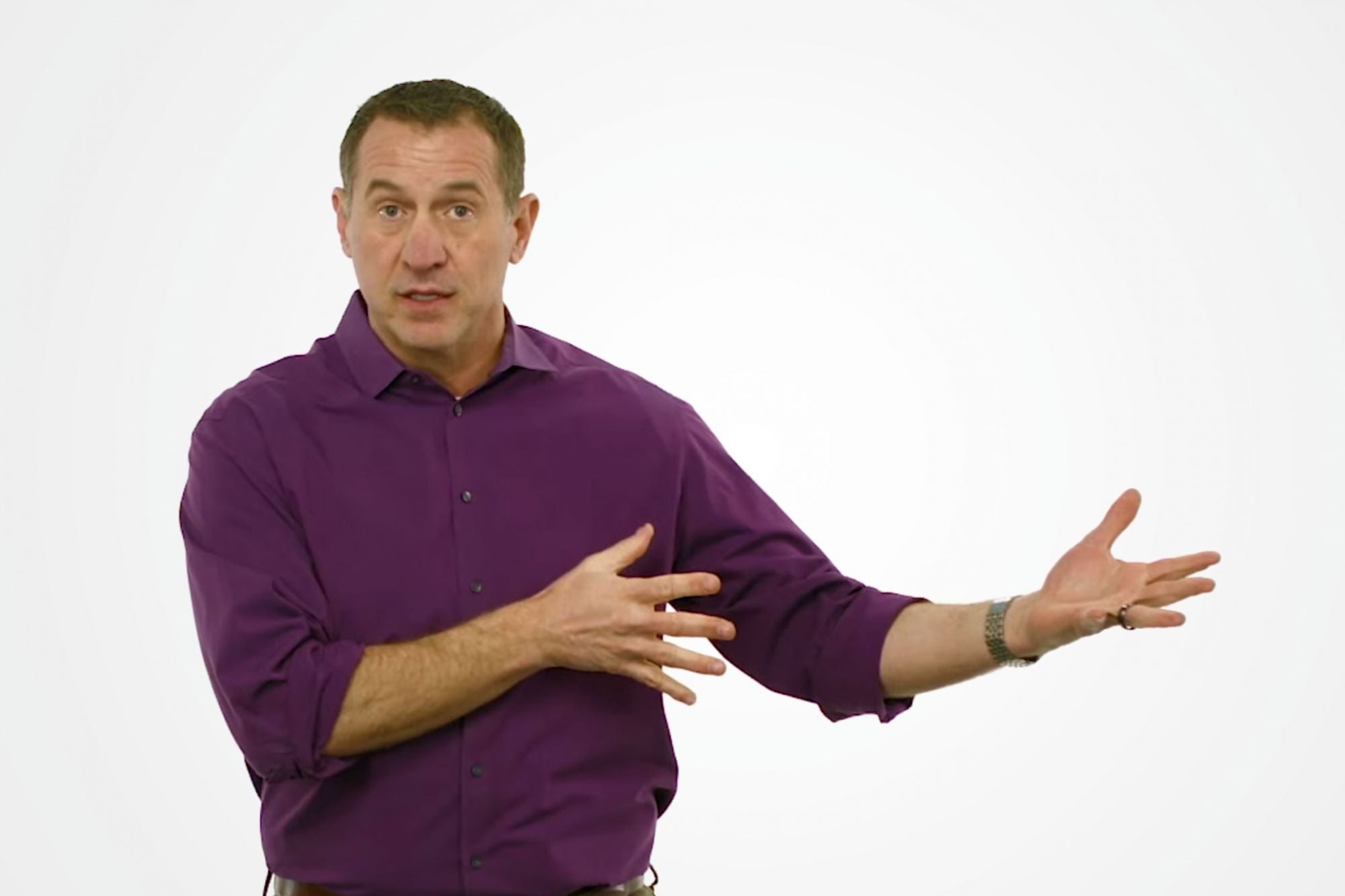The 12 Tax Days of Christmas: Day 9If you'd rather be taxed on your retirement savings now than later, considering converting to a Roth IRA.
Opinions expressed by Entrepreneur contributors are their own.
Rather than your true love sending you a partridge in a pear tree, wouldn't you appreciate some money-saving tax tips? For my year-ending 12 Tax Days of Christmas series, I'll dig back into the archives of previous topical columns to reiterate understandable, realistic and legitimate tax strategies that you need to implement now in order to have a much smaller tax bill come April 15.
For this ninth tax day of Christmas, take heart: This could be the perfect time to convert your traditional IRA to a Roth account. Regardless of your income, you can convert as many dollars as you want. The tricky part is that you must make the election and choose the dollar amount you want to convertbeforeDecember 31.
Oftentimes, this has been referred to as a part of the "backdoor Roth" strategy. Many Americans don't think they qualify for a Roth IRA because they make too much money, but that only applies to the ability to make a contribution. The conversion strategy doesn't have an income limit. Anybody can convert as many dollars as they want.
Why Make the Conversion?
Many Americans wonder why they should convert their traditional IRA or 401(k) to a Roth. The key is to remember that with a traditional IRA or 401(k), the money grows tax-deferred, but you pay tax on the money as it is drawn out at retirement. On the other hand, although you don't get a tax deduction when you contribute to a Roth, it grows and comes out tax-free at retirement. What's better? Well, in the end, the Roth account is a much better deal, as you're pulling out what you put inandget to watch the growth of the account after years of investing and saving.
Many agree that when you do the math, the Roth is the better deal. Yet, most Americans have been sucked into traditional IRAs and 401(k)s, because we get a tax deduction when we put the money in a traditional account, saving us money on taxes now.
Related:The 12 Tax Days of Christmas: Day 9
The "Cost" to Convert
The price to make that conversion is the tax you have to pay on the amount you convert as if was regular taxable income on your tax return. There is no penalty, but the tax has to be paid out of your own pocket, not out of the IRA account. For example, if I convert $100,000 from my traditional IRA to a Roth IRA in 2019, I will take that $100,000 as income on my 2019 tax return, then pay any federal and state taxes on that income depending on my 2019 tax bracket. Many retirement-account owners want to move their traditional funds to a Roth, but don't like the idea of paying additional taxes to do so.
True, it can be a big tax hit. I get it. Nobody likes paying more taxes now, even if it clearly saves you more as your account grows and the entire growth comes out tax-free. Thus, it's critical to examine and estimate what tax bracket you are inbeforeandafterthe conversion, the general rule being: You don't want to convert so much that it kicks you into a higher bracket. Hereis a videoin which I explain the sweet spot on the right amount to convert.
Chunking Conversions
One way to soften the tax blow of the Roth conversion is to chunk the amount you want to convert over two or more years. For example, if you are at the end of the year in December 2019 and you want to convert $100,000 to a Roth, you may decide to convert $100,000 by December 31, 2019 to have that taxed in the current year and then convert the remaining $50,000 on January 1, 2020 to have that amount taxed in 2020. This way, you don't have as much of an income swing, and it spreads the tax due over the two years. You could also do $33,000 each year to spread it out over three years.
Here are three cut-and-dry situations in which you should definitely convert your traditional IRA or 401(k) funds to a Roth:
- Upside Investment Opportunity.I've had numerous clients over the years convert their traditional funds to a Roth before investing their account into a certain investment. They've done this because they've had a tremendous investment opportunity arise where they expect significant returns. They'd rather pay the tax on the smaller investment amounts now, so that the returns will go back into their Roth IRA or 401(k), where it can grow to an unlimited amount and come out tax-free. These clients have invested in real-estate deals, startups, pre-IPOs and other potentially lucrative opportunities. So, if you have an investment that you really believe in and will likely result in significant returns, then you're far better off paying a little tax on the amount being invested before the account grows and returns a large profit. That way, the profit goes back into the Roth and the money becomes tax-free.
- Low-Income Year.另一种情况,你应该秘密秩序tional funds to a Roth is a low-income tax-year. Since the pain of the conversion is that you have to pay tax on the amount that you convert, you should convert when you are in a lower tax bracket to lessen the blow. For example, if you are married and have $75,000 of taxable income for the year and you decide to convert $50,000 to a Roth, you will pay federal tax on that converted amount at a rate of 15 percent, which would result in $7,500 in federal taxes. Keep in mind that you also pay state tax on the amount that you convert (if your state has state income tax), and most states have stepped brackets where you pay tax at a lower rate when you have lower income. If you instead converted when you were in a high-income year -- let's say $250,000 of income -- then you'd pay federal tax on a $50,000 conversion at a rate of 33 percent, which would result in federal taxes of $16,500. That's more than twice the taxes due when you are in a lower-income year. Now, you may not have taxable income fluctuations, but those who are self-employed, change jobs or have a loss of income, or have investment losses where taxable income is lower than normal for a year, should think about converting their retirement funds to a Roth.
- Potential Need for a Distribution After Five Years.罗斯账户的好处之一就是你可以take out the funds that are contributed or converted after five years without paying tax or the early withdrawal penalty (even if you aren't 59 1/2). For Roth conversions, the amount you convert can be distributed from the Roth account five years after the tax year in which you converted. The five-year clock starts to tick on January 1 of the tax year in which you convert, regardless of when you convert within the year. So, if you converted your traditional IRA to a Roth IRA in December 2019, then you could take a distribution of the amounts converted without paying tax or penalty on January 2, 2024. If you try to access funds in your traditional IRA or 401(k) before you are 59 1/2, then you will pay tax and a 10 percent early withdrawal penalty, even if the amounts you distribute are only the contributions you put in, not the investment gains. Clearly, the Roth account is much more accessible in the event you need personal funds. Keep in mind, you don't get this perk immediately. You have to wait five years from the tax year in which you converted before you can take out the converted amount tax and penalty free.
Related:The 12 Tax Days of Christmas: Day 7
One final thought to consider when converting to a Roth is that there are no do-overs. You used to be able to do what was called a Roth re-characterization where you could undo a Roth conversion, but the ability to undo a Roth conversion was eliminated in 2018 and going forward. As a result, make sure you're committed before you convert, as there are no mulligans, do-overs or re-characterizations anymore.
In sum, do the math regarding your tax bracket, get chunking, start self-directing the account and live a tax-free life in the future.
















